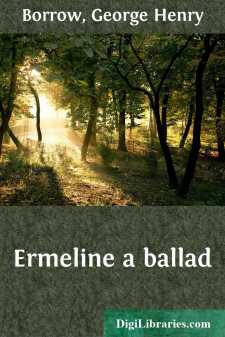Categories
- Antiques & Collectibles 13
- Architecture 36
- Art 48
- Bibles 22
- Biography & Autobiography 813
- Body, Mind & Spirit 142
- Business & Economics 28
- Children's Books 15
- Children's Fiction 12
- Computers 4
- Cooking 94
- Crafts & Hobbies 4
- Drama 346
- Education 46
- Family & Relationships 57
- Fiction 11828
- Games 19
- Gardening 17
- Health & Fitness 34
- History 1377
- House & Home 1
- Humor 147
- Juvenile Fiction 1873
- Juvenile Nonfiction 202
- Language Arts & Disciplines 88
- Law 16
- Literary Collections 686
- Literary Criticism 179
- Mathematics 13
- Medical 41
- Music 40
- Nature 179
- Non-Classifiable 1768
- Performing Arts 7
- Periodicals 1453
- Philosophy 64
- Photography 2
- Poetry 896
- Political Science 203
- Psychology 42
- Reference 154
- Religion 513
- Science 126
- Self-Help 84
- Social Science 81
- Sports & Recreation 34
- Study Aids 3
- Technology & Engineering 59
- Transportation 23
- Travel 463
- True Crime 29
The Gold Horns
Description:
Excerpt
INTRODUCTION
Early in the present year Mr. Thos. J. Wise discovered among the miscellaneous MSS. of Borrow a fragment which proved to be part of a version of Oehlenschläger’s Gold Horns. His attention being drawn to the fact, hitherto unknown, that Borrow had translated this famous poem, he sought for, and presently found, a complete MS. of the poem, and from this copy the present text has been printed. The paper on which it is written is watermarked 1824, and it is probable that the version was composed in 1826. The hand-writing coincides with that of several of the pieces included in the Romantic Ballads of that year, and there can be little doubt that Borrow intended The Gold Horns for that volume, and rejected it at last. He was conscious, perhaps, that his hand had lacked the skill needful to reproduce a lyric the melody of which would have taxed the powers of Coleridge or of Shelley. Nevertheless, his attempt seems worthy of preservation.
The Gold Horns marks one of the most important stages in the history of Scandinavian literature. It is the earliest, and the freshest, specimen of the Romantic Revival in its definite form. In this way, it takes in Danish poetry a place analogous to that taken by The Ancient Mariner in English poetry.
The story of the events which led to the composition of The Gold Horns is told independently, by Steffens and by Oehlenschläger in their respective Memoirs, and the two accounts tally completely. Adam Gottlob Oehlenschläger (1779–1850), the greatest poet whom the North of Europe has produced, had already attracted considerable renown and even profit by his writings, which were in the classico-sentimental manner of the late 18th century, when, in the summer of 1802, the young Norwegian philosopher, Henrik Steffens, arrived in Copenhagen from Germany, where he had imbibed the new romantic ideas. He began to give lectures on æsthetics, and these awakened a turmoil of opposition. Among those who heard him, no one was more scandalised than Oehlenschläger, then in his twenty-third year. He was not acquainted with Steffens, but in the course of the autumn they happened to meet at a restaurant in Copenhagen, when they instantly experienced a violent mutual attraction. Steffens has described how deep an impression was made upon him by the handsome head, flashing eyes, and graceful vivacity of the poet, while Oehlenschläger bears witness to being no less fascinated by the gravity and enthusiasm of the philosopher. The new friends found it impossible to part, and sixteen hours had gone by, and 3 a.m. had struck, before Oehlenschläger could tear himself away from the company of Steffens.
He scarcely slept that night, and rose in a condition of bewilderment and rapture. His first act, after breakfast, was to destroy a whole volume of his own MS. poetry, which was ready for press, and for which a publisher had promised him a handsome sum of money. His next was to sit down and write The Gold Horns, a manifesto of his complete conversion to the principles of romanticism. Later in the day he presented himself again at Steffens’ lodgings, bringing the lyric with him, “to prove,” as he says, “to Steffens that I was a poet at last beyond all doubt or question.” His new friend received him with solemn exultation. “Now you are indeed a poet,” he said, and folded him in his arms. The conversion of Oehlenschläger to romanticism meant the conquest of Danish literature by the new order of thought.
Oehlenschläger has explained what it was that suggested to him the leading idea of his poem. Two antique horns of gold, discovered some time before in the bogs of Slesvig, had been recently stolen from the national collection at Rosenborg, and the thieves had melted down the inestimable treasures. Oehlenschläger treats these horns as the reward for genuine antiquarian enthusiasm, shown in a sincere and tender passion for the ancient relics of Scandinavian history. From a generation unworthy to appreciate them, the Horns had been withdrawn, to be mysteriously restored at the due romantic hour. He was, when he came under the influence of Steffens, absolutely ripe for conversion, filled with the results of his Icelandic studies, and with an imagination redolent of Edda and the Sagas. To this inflammable material, Henrik Steffens merely laid the torch of his intelligence....












